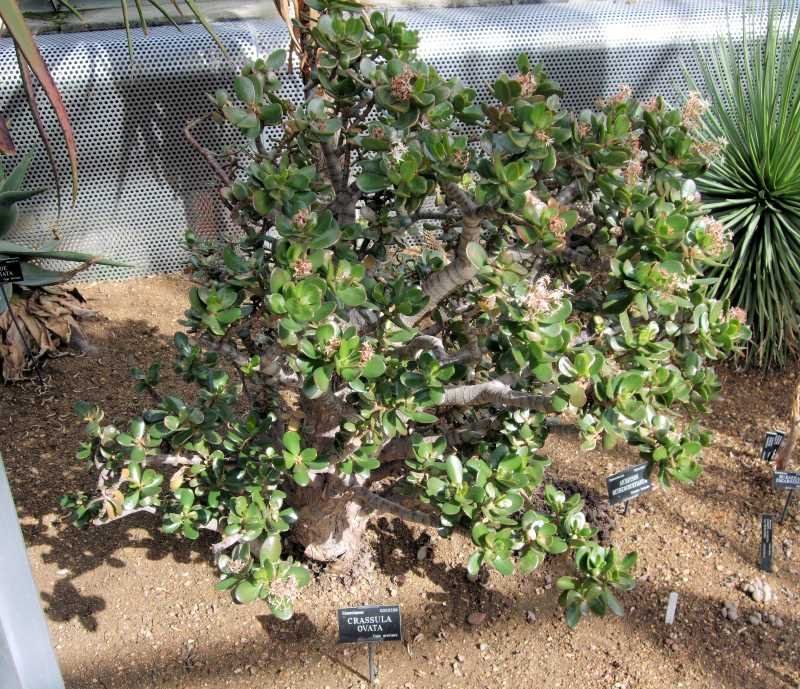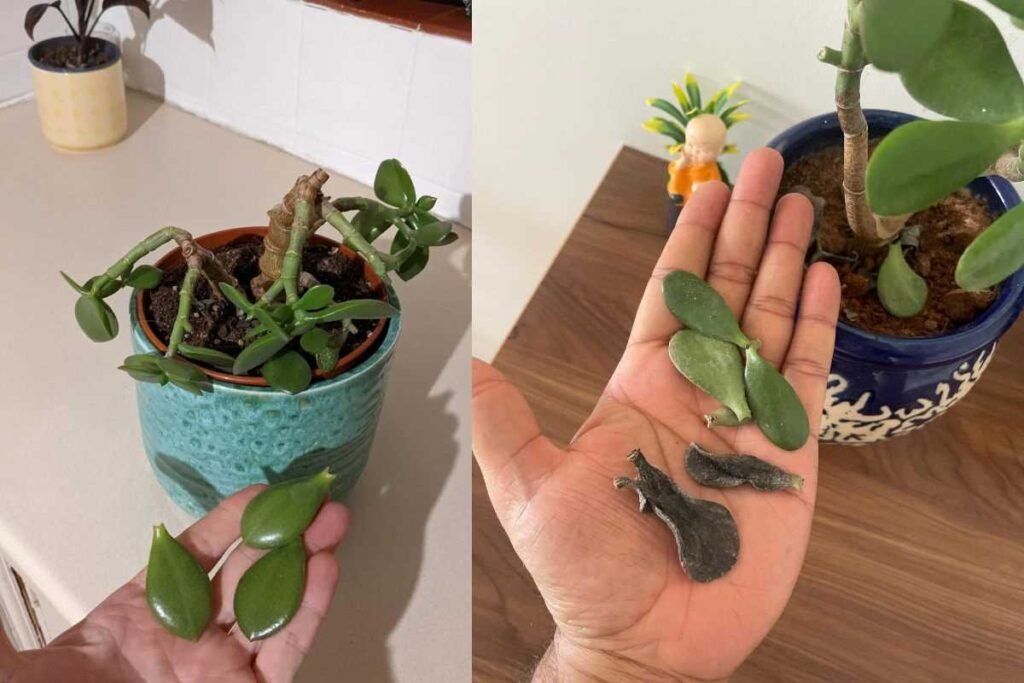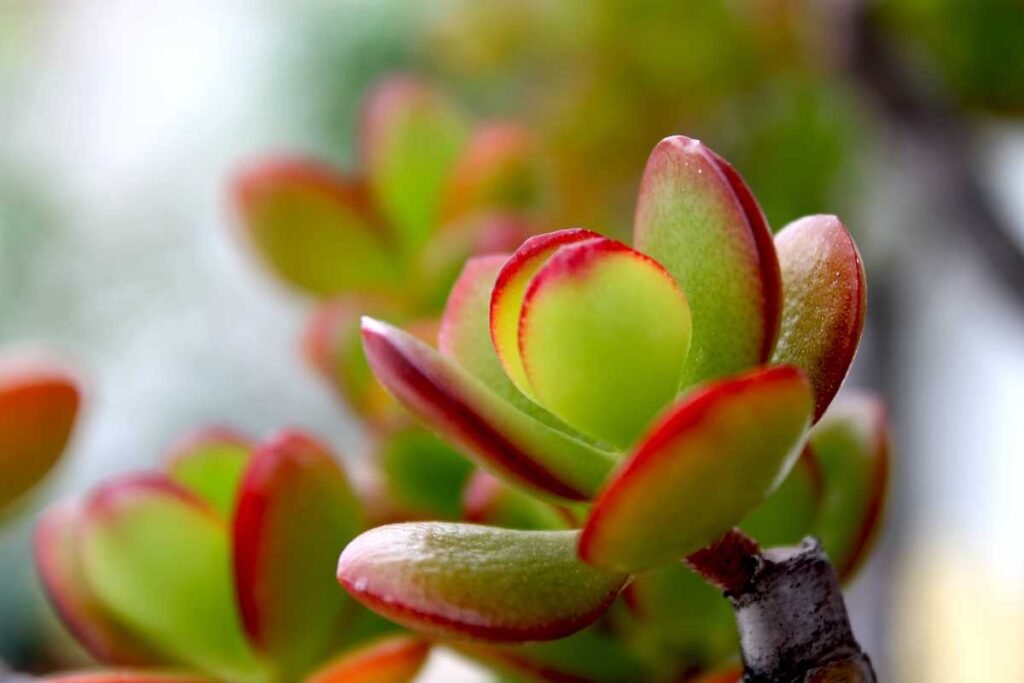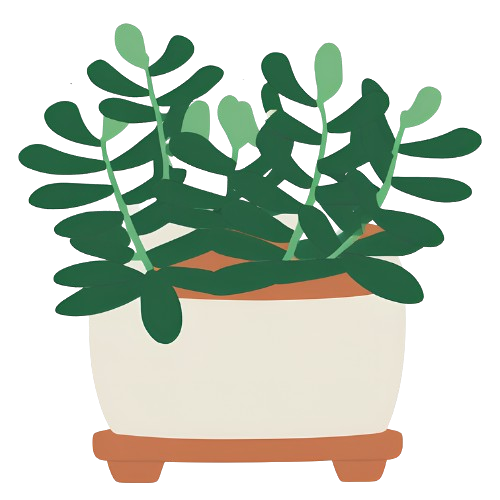Jade plants (Crassula ovata) are beloved for their thick, glossy, succulent leaves and their easy-care nature. Originating from South Africa, these plants have found their way into homes and gardens worldwide, becoming a symbol of prosperity and good luck. One critical aspect of jade plant care is understanding the ideal temperature conditions that help them thrive.
This comprehensive guide will delve into the best temperature ranges for jade plants, how to manage temperature fluctuations, and how to ensure your jade plant stays healthy throughout the year.
Table of Contents
Introduction to Jade Plants
Jade plants are succulent houseplants that can live for many years with proper care. They are characterized by their fleshy, oval-shaped leaves and sturdy, woody stems that resemble miniature trees. While jade plants are relatively low-maintenance, they do have specific needs, especially regarding temperature.
Natural Habitat and Adaptation
In their native habitat of South Africa and Mozambique, jade plants grow in a warm, arid climate. They are accustomed to high daytime temperatures and cooler nights, with minimal rainfall. These conditions have shaped jade plants to be resilient and adaptable, but they still have their limits when it comes to temperature tolerance.
Ideal Temperature Range for Jade Plants
The ideal temperature range for jade plants is between 65°F and 75°F (18°C to 24°C) during the day and 50°F to 55°F (10°C to 13°C) at night. This range mimics the natural conditions of their native habitat and helps ensure optimal growth and health.
Daytime Temperatures
During the day, jade plants thrive in temperatures between 65°F and 75°F (18°C to 24°C). These temperatures provide the warmth needed for photosynthesis and other metabolic processes. If temperatures rise above 75°F (24°C), ensure the plant has adequate airflow and is not in direct sunlight for extended periods to prevent overheating.
Nighttime Temperatures
Nighttime temperatures for jade plants should be cooler, ideally between 50°F and 55°F (10°C to 13°C). This drop in temperature is important as it mimics the natural environment and helps the plant to rest and recuperate. Consistently warm nights can stress the plant and impede its growth.
Seasonal Temperature Variations
Jade plants, like many succulents, have a natural growing season and a dormant period. Understanding how temperature affects these phases is crucial for proper care.
Spring and Summer
During the spring and summer months, jade plants enter their active growing phase. Warmer temperatures and longer daylight hours stimulate new growth. Aim to keep daytime temperatures within the ideal range of 65°F to 75°F (18°C to 24°C). If you place your jade plant outdoors, ensure it is shaded from the harsh midday sun to prevent leaf scorch.
Fall and Winter
In the fall and winter, jade plants enter a dormant period. During this time, they require cooler temperatures and less frequent watering. Nighttime temperatures can drop to around 50°F (10°C) without harming the plant. This cooler period helps the plant conserve energy and prepares it for the next growing season.
Maintain the Best Temperature for Jade Plants

To provide the best care for your jade plant, it is essential to maintain stable temperature conditions year-round. Sudden temperature fluctuations can stress the plant and lead to various issues, including leaf drop and stunted growth.
Indoor Temperature Control
For indoor jade plants, maintaining the ideal temperature range is relatively straightforward. Here are some tips to ensure your plant stays within the optimal range:
- Placement: Avoid placing your jade plant near drafts, heating vents, or air conditioning units. These can cause sudden temperature changes that stress the plant.
- Sunlight: While jade plants need plenty of light, too much direct sunlight, especially in the afternoon, can cause overheating. Place your plant in a bright location with filtered light.
- Humidity: Jade plants prefer low to moderate humidity levels. High humidity combined with high temperatures can increase the risk of fungal infections.
Outdoor Temperature Management

If you keep your jade plant outdoors, you will need to be more vigilant about temperature changes. Here are some tips for outdoor care:
- Seasonal Movement: During the warmer months, jade plants can benefit from being outdoors in a sheltered location. However, as temperatures drop in the fall, bring your plant indoors to prevent exposure to cold nights.
- Protection: If unexpected cold weather is forecasted, cover your outdoor jade plant with a cloth or move it to a sheltered location to protect it from frost.
- Container Choice: Use a container with good insulation properties to protect the roots from extreme temperatures. Terra cotta pots are a good choice as they allow the soil to dry out between waterings and provide some insulation.
Effects of Temperature Extremes
While jade plants are relatively hardy, they can suffer if exposed to temperatures outside their preferred range for prolonged periods.
High Temperatures
High temperatures, especially above 85°F (29°C), can cause jade plants to become stressed. Symptoms of heat stress include:
- Leaf Scorch: Brown or black spots on the leaves, often caused by direct sunlight combined with high temperatures.
- Wilting: The plant may become limp and appear dehydrated, even if the soil is moist.
- Leaf Drop: High temperatures can cause the plant to shed its leaves to conserve water.
To mitigate these effects, ensure your jade plant is not in direct sunlight during the hottest part of the day and provide adequate ventilation.
Low Temperatures
Low temperatures, particularly below 40°F (4°C), can cause significant damage to jade plants. Symptoms of cold stress include:
- Leaf Discoloration: Leaves may turn red or purple, a sign of cold-induced stress.
- Leaf Drop: Similar to high-temperature stress, cold temperatures can cause leaves to drop.
- Stem Damage: Prolonged exposure to cold can cause the stems to become mushy and prone to rot.
To protect your jade plant from cold damage, move it indoors when temperatures drop and avoid placing it near cold drafts or windows during the winter.
Acclimating Jade Plants to Temperature Changes
Gradual acclimation is key to helping your jade plant adjust to temperature changes. Abrupt shifts can shock the plant and cause stress.
Moving Outdoors in Spring
When transitioning your jade plant outdoors in the spring, do so gradually:
- Start with Shade: Place the plant in a shaded location for a few hours each day, gradually increasing the exposure over a week.
- Increase Sunlight: Slowly move the plant to a brighter location, ensuring it does not receive direct sunlight during the hottest part of the day.
- Monitor: Keep an eye on the plant for any signs of stress and adjust its location as needed.
Moving Indoors in Fall
Similarly, when bringing your jade plant indoors in the fall, follow these steps:
- Reduce Watering: Gradually reduce watering as the plant adjusts to cooler temperatures and lower light levels.
- Inspect for Pests: Check the plant for any pests or diseases that might have developed outdoors.
- Find a Suitable Location: Place the plant in a bright, cool location away from drafts and heating vents.
Common Temperature-Related Issues
Several issues can arise if a jade plant is exposed to unsuitable temperatures. Recognizing these problems early can help you take corrective action.
Sunburn
Sunburn occurs when jade plants are exposed to intense, direct sunlight, especially during high temperatures. Symptoms include:
- White or pale spots on the leaves.
- Leaves that feel dry and crispy to the touch.
To prevent sunburn, gradually acclimate your plant to outdoor conditions and provide some shade during the hottest parts of the day.
Frost Damage
Frost damage happens when jade plants are exposed to freezing temperatures. Symptoms include:
- Blackened or mushy leaves and stems.
- Leaf drop.
To prevent frost damage, bring your jade plant indoors before the first frost and avoid placing it near cold windows or doors.
Heat Stress
Heat stress is common during prolonged periods of high temperatures. Symptoms include:
- Wilting leaves despite adequate watering.
- Leaf drop and stunted growth.
Ensure your plant has adequate airflow and is not exposed to direct sunlight during the hottest parts of the day.
Related FAQs
1. What is the best temperature range for a jade plant?
The ideal temperature range for a jade plant is between 65°F and 75°F (18°C to 24°C) during the day and between 50°F and 55°F (10°C to 13°C) at night. This range mimics the natural conditions of their native habitat and ensures optimal growth and health.
2. Can jade plants tolerate high temperatures?
Jade plants can tolerate higher temperatures up to 85°F (29°C), but they may become stressed if temperatures remain consistently above this level. Symptoms of heat stress include leaf scorch, wilting, and leaf drop. Providing adequate airflow and avoiding direct sunlight during the hottest part of the day can help mitigate heat stress.
3. What should I do if my jade plant is exposed to freezing temperatures?
If your jade plant is exposed to freezing temperatures, it can suffer frost damage. Symptoms include blackened or mushy leaves and stems. To prevent frost damage, bring your jade plant indoors before the first frost and avoid placing it near cold windows or doors.
4. How can I protect my jade plant from temperature fluctuations?
To protect your jade plant from temperature fluctuations:
- Indoors: Avoid placing your plant near drafts, heating vents, or air conditioning units.
- Outdoors: Use a container with good insulation properties and provide shelter or cover during unexpected cold weather.
5. Can I keep my jade plant outdoors all year round?
Jade plants can be kept outdoors during the warmer months but should be brought indoors before temperatures drop below 50°F (10°C) at night. Prolonged exposure to cold temperatures can damage the plant.
6. How does temperature affect the watering needs of a jade plant?

Temperature affects the watering needs of a jade plant significantly. In warmer temperatures, jade plants may require more frequent watering due to increased evaporation. Conversely, in cooler temperatures, especially during the dormant period in fall and winter, reduce watering to prevent root rot.
7. What are the signs of temperature stress in a jade plant?

Signs of temperature stress in a jade plant include:
- High Temperature Stress: Leaf scorch, wilting, and leaf drop.
- Low Temperature Stress: Leaf discoloration (red or purple), leaf drop, and stem damage.
8. Can jade plants recover from temperature stress?
Yes, jade plants can recover from temperature stress if the conditions are corrected promptly. Move the plant to a more suitable location, ensure proper watering, and provide adequate light. Damaged leaves and stems may need to be pruned to encourage new growth.
9. How can I acclimate my jade plant to temperature changes?
Gradually acclimate your jade plant to temperature changes to prevent shock:
- Moving Outdoors in Spring: Start with a shaded location and gradually increase sunlight exposure.
- Moving Indoors in Fall: Reduce watering, check for pests, and place the plant in a bright, cool location away from drafts and heating vents.
10. Why is my jade plant turning red or purple?

Jade plant leaves can turn red or purple due to exposure to cold temperatures, which causes stress. This is a protective response, but prolonged exposure can lead to further damage. Move the plant to a warmer location to prevent further stress.
11. What type of container is best for regulating temperature for a jade plant?
Terra cotta pots are ideal for jade plants as they provide good insulation properties, allowing the soil to dry out between waterings and helping to regulate temperature. Avoid plastic containers that can retain heat and cause root overheating.
12. Can jade plants tolerate air conditioning?
Jade plants can tolerate air conditioning as long as they are not placed directly in the path of cold drafts. Sudden drops in temperature can stress the plant. Place your jade plant in a stable environment away from direct air conditioning airflow.
Conclusion
Maintaining the ideal temperature range for your jade plant is crucial for its health and longevity. By understanding the natural habitat and temperature preferences of jade plants, you can create an environment that mimics their native conditions and promotes optimal growth. Whether you keep your jade plant indoors or outdoors, paying attention to temperature variations and making necessary adjustments will help your plant thrive for years to come. Remember, gradual acclimation and careful monitoring are key to preventing temperature-related stress and ensuring a healthy, vibrant jade plant.

My name is Shahriar Robin, and I’m the creator of JadePlants.org. Growing up in a village, I developed a deep connection with nature from a young age. Plants and gardening have always been a part of my life, and jade plants, with their resilience and elegance, have held a special place in my heart. Over the years, I’ve learned so much about these fascinating plants, and I created this site to share that knowledge with you—completely free of charge.

